What is 5G technology?
The fifth generation of cellular network technology, or 5G, offers many significant improvements over previous generations. Perhaps most impressive is the speed - 5G is expected to deliver data 100 times faster than the average 4G network [1].
lnfrastructure to accommodate 5G technology is being built as rapidly as possible, as businesses around the world work to upgrade their systems. In 2020, the global 5G service market size was valued at $41.48 billion, and global tech analysts expect the market to grow at an estimated compound annual growth rate (CAGR) of 46.2% within the next seven years [2].
Through advanced antenna design, cell tower improvements, and greater frequency rates, 5G provides bigger channels that speed up data, lower latency, reduce energy consumption, and lower maintenance costs. lt also increases capacity for the lloT (lndustrial Internet of Things), empowering companies to connect more sensor and smart devices at once. A recent report by Frost & Sullivan predicts that 90% of industrial enterprises will use edge computing by 2022 [3], requiring the connectivity, speeds, and low latency that only 5G can provide. The result is a dramatic impact on a broad range of industries, including manufacturing, energy and utilities, IT, transportation and logistics, aerospace and defense, agriculture, construction, and healthcare. Basically, any application that requires instantaneous communication will benefit from a robust 5G network.
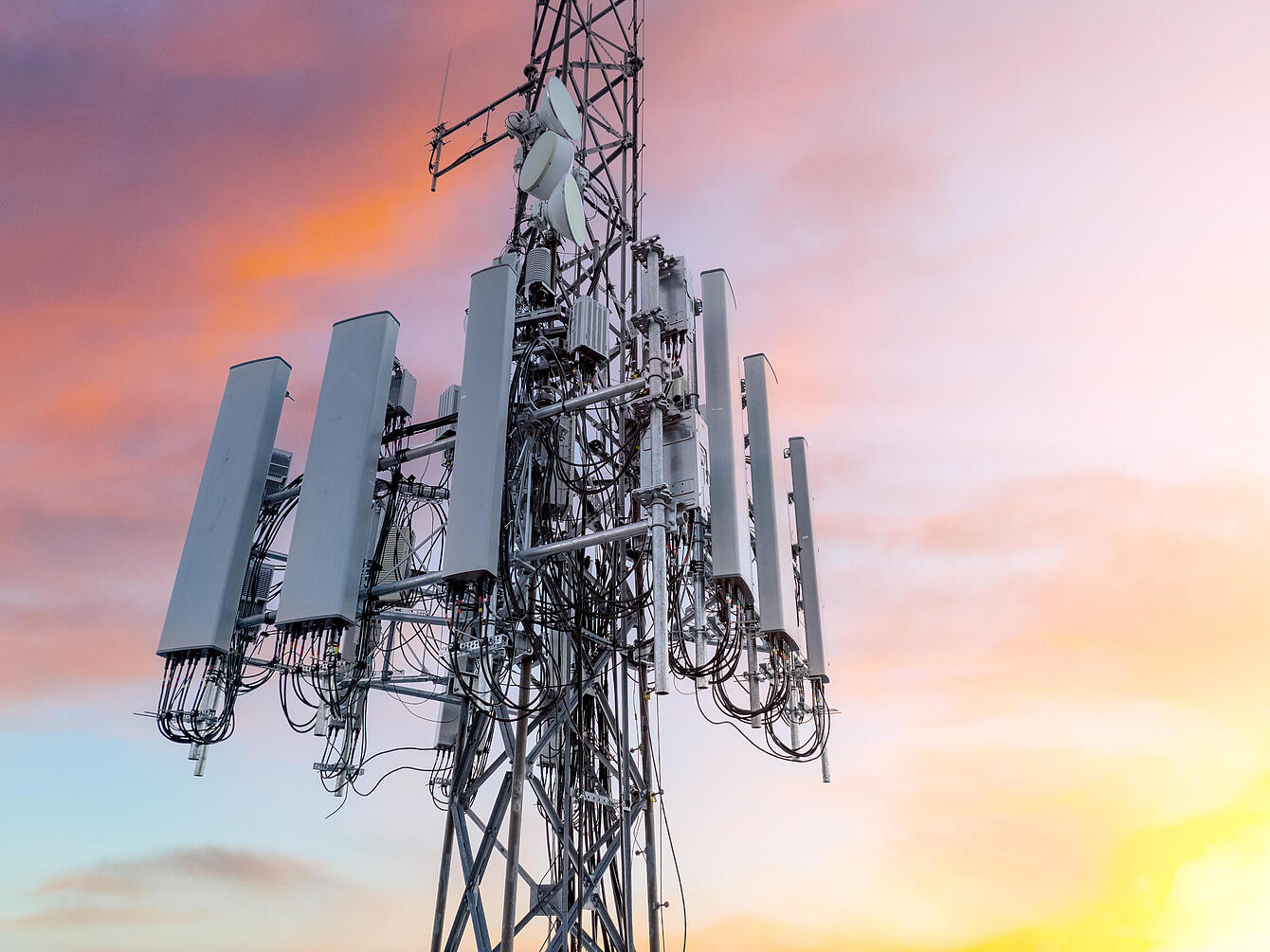

Smaller, more advanced cells power 5G
Compared to other wireless systems, 5G uses higher (and less cluttered) radio frequencies, allowing it to carry more information at a much faster rate. Because higher frequencies are easily blocked by physical objects such as buildings, and may be negatively impacted by weather conditions, 5G uses a higher number of smaller transmitters to boost signals and capacity across the network. 5G cells contain the equipment needed to transmit data between connected devices.
The antennas within the small cell are highly directional and use what‘s called beamforming to direct attention to very specific areas around the tower. These devices can also quickly adjust power usage based on the current load. This means when a radio is not in use, it will drop down into a lower power state in just a few milliseconds, and then re-adjust just as quickly when more power is needed .... At a minimum, 5G must support one million devices for every square kilometer (0.386 square miles),“ wrote Tim Fisher on Lifewire.com [4].
Updated AISG connector standards
Connectors act as the vital link between the cables carrying data and the devices that record and communicate information. For cell tower antennas, the demand for faster and more reliable data transmission has driven the development of products able to support the specific connector requirements set by the Antenna Interface Standards Group (AISG). The AISG defines the communication interface for „remote electrical tilt“ (RET) of the mobile phone antenna. The AISG standard helps to define the AISG connector for RS-485 (AISG C485), which is used for outdoor applications [5].
The AISG standard has been redefined in terms of electrical and mechanical characteristics, environmental conditions, and materials. (See below)
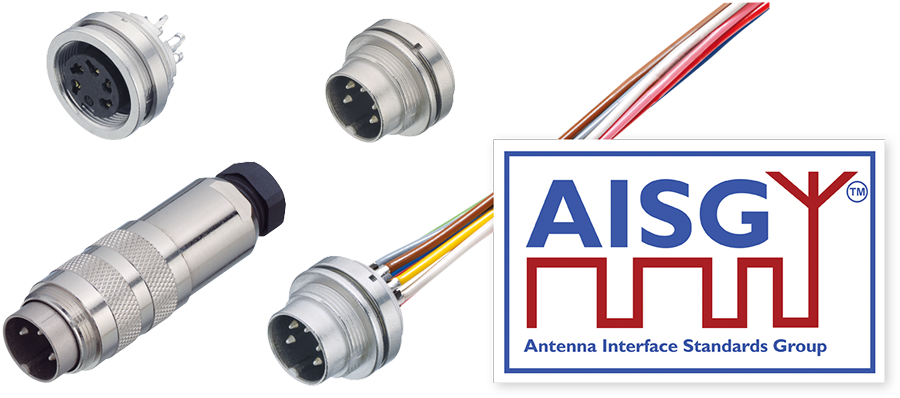
Electrical characteristics
- Rated voltage of 32V
- Current carrying capacity of 5A per contact
- Contact resistance (≥ 5mΩ)
- lnsulation resistance (≥108 0)
Mechanical characteristics:
- IP68 protection degree
- >100 Mating cycles
- Insertion and withdrawal forces of 60N max
- Keying method
- Vibration and shock resistance
- Cable retention force of 80N
Environmental conditions:
- Harsh environment resistance (protection against temperature, salt mist, sunlight, and rain exposure)
Material and other characteristics:
- Housing surface of nickel is recommended
- Contact plating of gold or silver
- Crimp or solder termination
- 8 pins with 4 to 5 pins used
- M16 x 0.75 screw locking system
- EMC shielding
M16 connectors and 5G applications
Different M16 connector styles are used within the control infrastructure of antennas and antenna line products, such as RET, tower mounted amplifier (TMA), sensor, and monitoring devices. Gable assemblies fitted with these M16 connectors connect the mobile phone base station to an electric motor mounted on the base of the antenna. Outdoor applications like these need connectors that provide reliable protection against environmental conditions to ensure waterproofness.
The number and variety of applications well suited to the M16 connector have greatly increased over the years thanks to a higher pin count, compact size, and improved levels of protection. The latest SG applications are the perfect example of the M16‘s adaptability to new performance and environmental challenges. The M 16 connector is an excellent alternative to more expensive connector systems, offering a rugged and reliable design at an affordable price. Contacts with gold plating offer a protective coating to help ensure the connection is free of any corrosion. Nickel plated brass outer housing/shell offers environmental protection, as well as high vibration and shock resistance.
EMC Shielding
Millions of cell phones, computers, and smart devices create significant potential for electromagnetic signal interference (EMI) and data disruption.
The most effective defense against EMI is filtering at the connector interface [6]. Optimized 360° EMC (electromagnetic compatibility) shielding for M16 connectors provides the highest integrity for sensitive signal and power connections. Shielding is metal and available as a cable clamp or shielding ring.
Effective shielding meets the attenuation requirements of the DIN 47250-6 standard. Attenuation is the lass of signal strength in network cables or connections during transmission. lt is typically measured in decibels or voltage. (See graphs on the right)
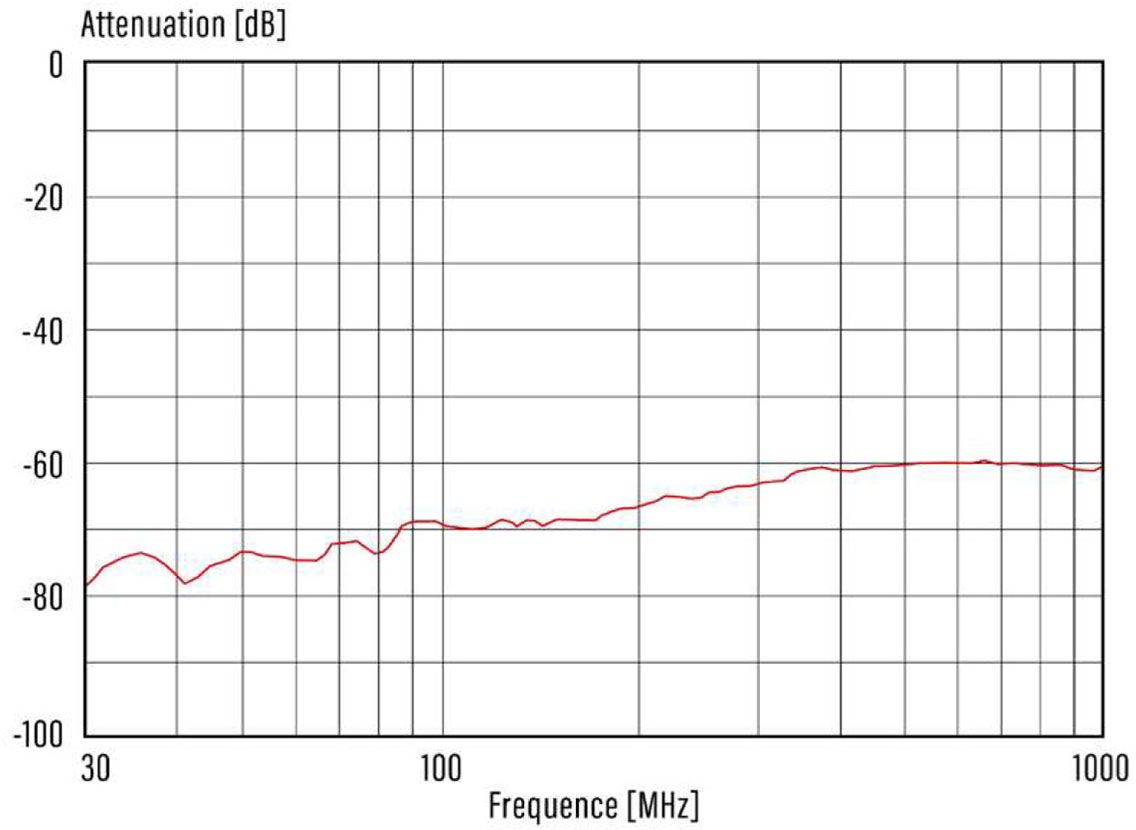
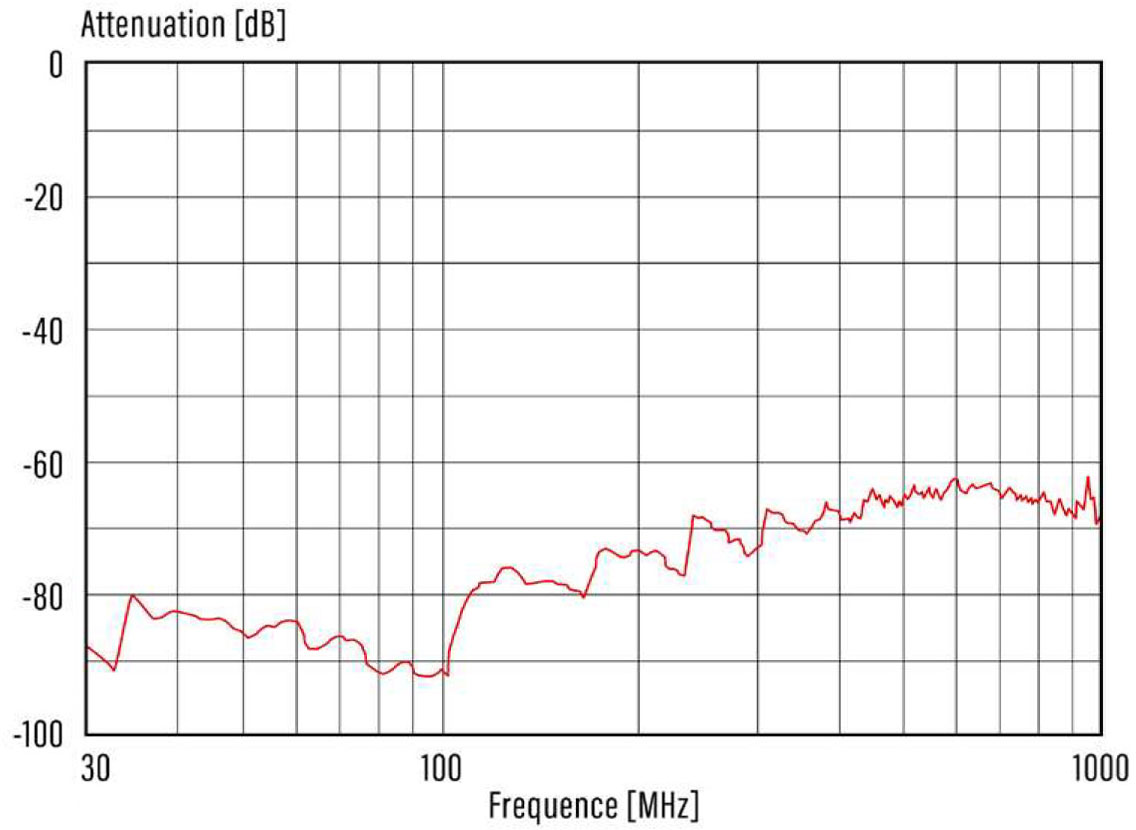
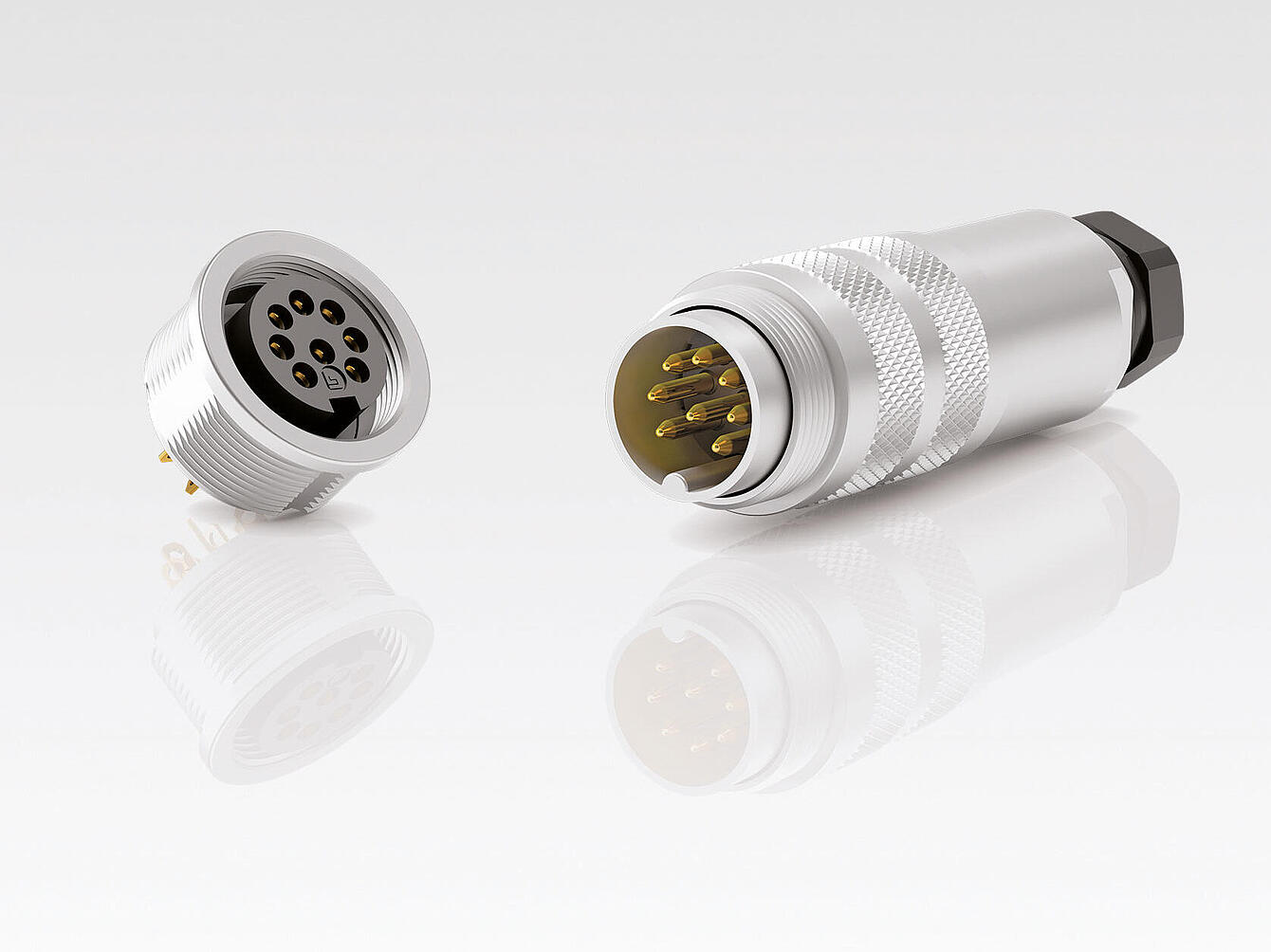
Potential of 5G technology
5G networks represent a genuine revolution in mobile connectivity: lightning fast connection speeds, lower latency, and greater device capacity that empower consumers and businesses alike. The lloT may approach its true potential with significant advances in automation, efficiency, and productivity. lndustries as diverse as manufacturing, healthcare, transportation, oil and gas, aerospace, and defense will be impacted.
Of course, 5G is only as reliable as the components and systems that power it. Reliable connections require stateof-the-art shielding and protection levels. Connectors - and their ability to ensure signal integrity, performance, and EMI shielding in the face of harsh outdoor conditions - are critical to the success of 5G. Forward-thinking companies have already designed their products to ensure they can handle 5G (and future) requirements at a competitive cost that allows the world to connect.
References
[1]
C. Eastman, „The Road to the Future? What to Expect from 5G,“ Tech Native. April 7, 2020.
[Online], Available:
https://technative.io/the-road-to-the-future-what-to-expect-from-5g/
[2]
Grand View Research, „5G Services Market Size, Share & Trends Analysis Report By Communication Type
(FWA, eMBB, uRLLC, mMTC), By Vertical (Manufacturing, IT & Telecom, BFSI), By Region, And Segment Forecasts, 2021 - 2028,“ March 2021.
[Online], Available:
https://www.grandviewresearch.com/industry-analysis/5g-servicesmarket
[3]
A. Gulli, „The Critical Role of 5G In the Future of Work,“ Forbes. Jan. 27, 2021.
[Online], Available:
https://www. forbes.com/sites/googlecloud/2021/01/27/the-critical-role-of-5g-in-the-future-of-work/?sh=6b9736c16619
[4]
T. Fisher, „5G Cell Towers: Why You See Thern and How They Work,“ Lifewire. March 24, 2021.
[Online], Available:
https://www.lifewire.com/5g-cell-towers-4584192
[5]
AISG Standard No. AISG C485 V1 .1. June 17, 2016.
[Online], Available:
https://aisg.org.uk/files/AISG-Connectorspecification-C485-v1.1.pdf
[6]
L. Smith, „Three Key Considerations When Selecting EMI/RFI Shielding Solutions for Aerospace and Defense Applications,“ April 6, 2020. ConnectorSupplier.com.
[Online], Available:
https://www.connectorsupplier.com/threekey-considerations-when-selecting-emi-rfi-shielding-solutions-for-aerospace-and-defense-applications/
